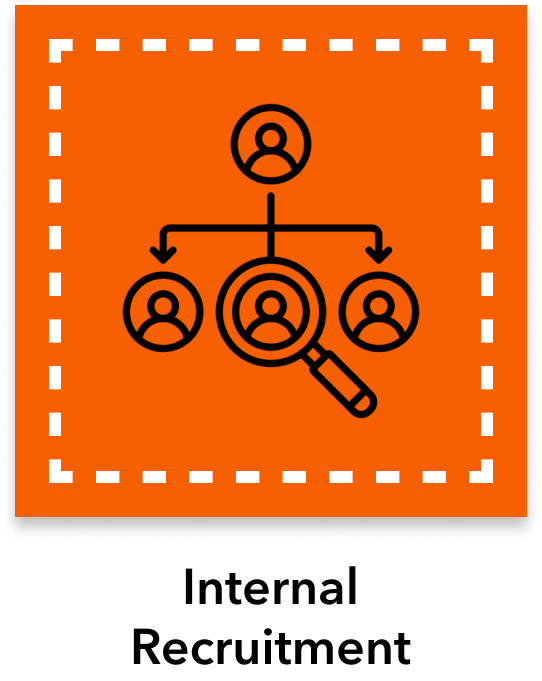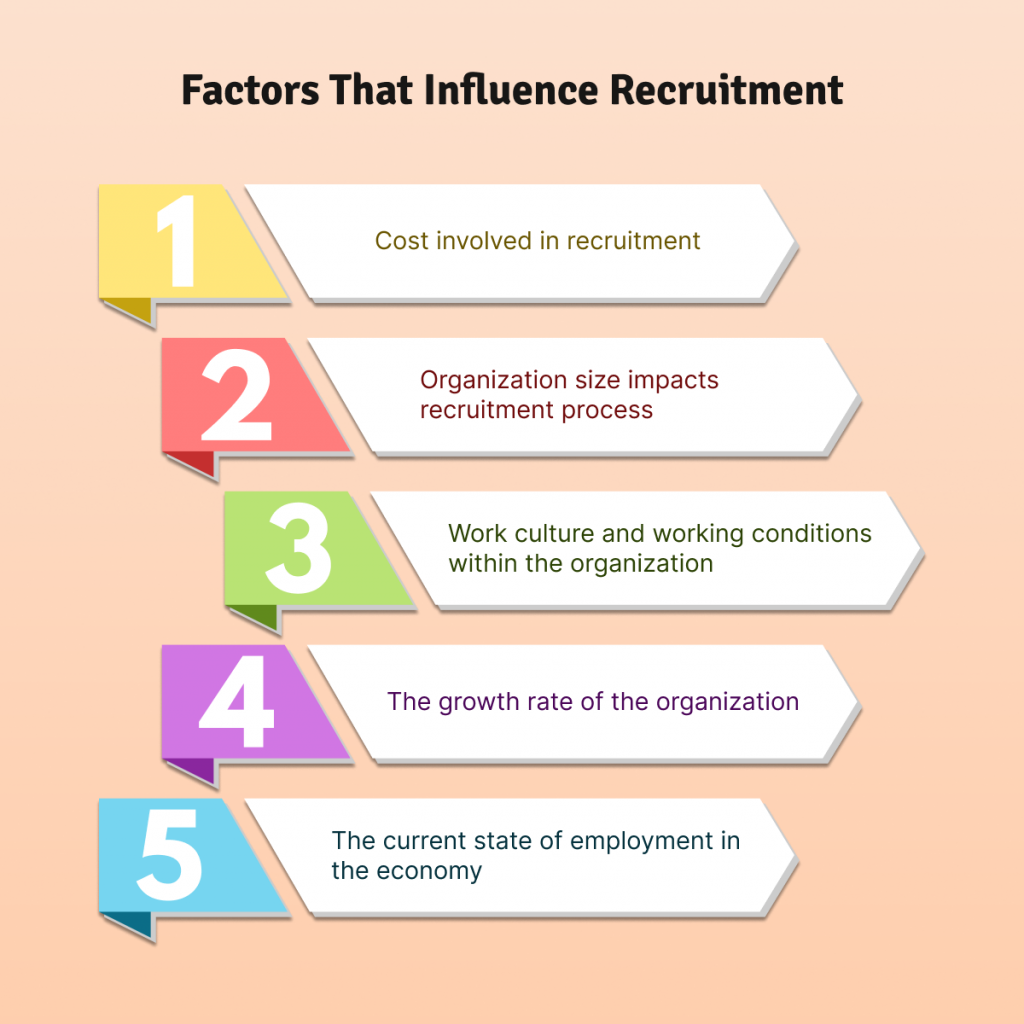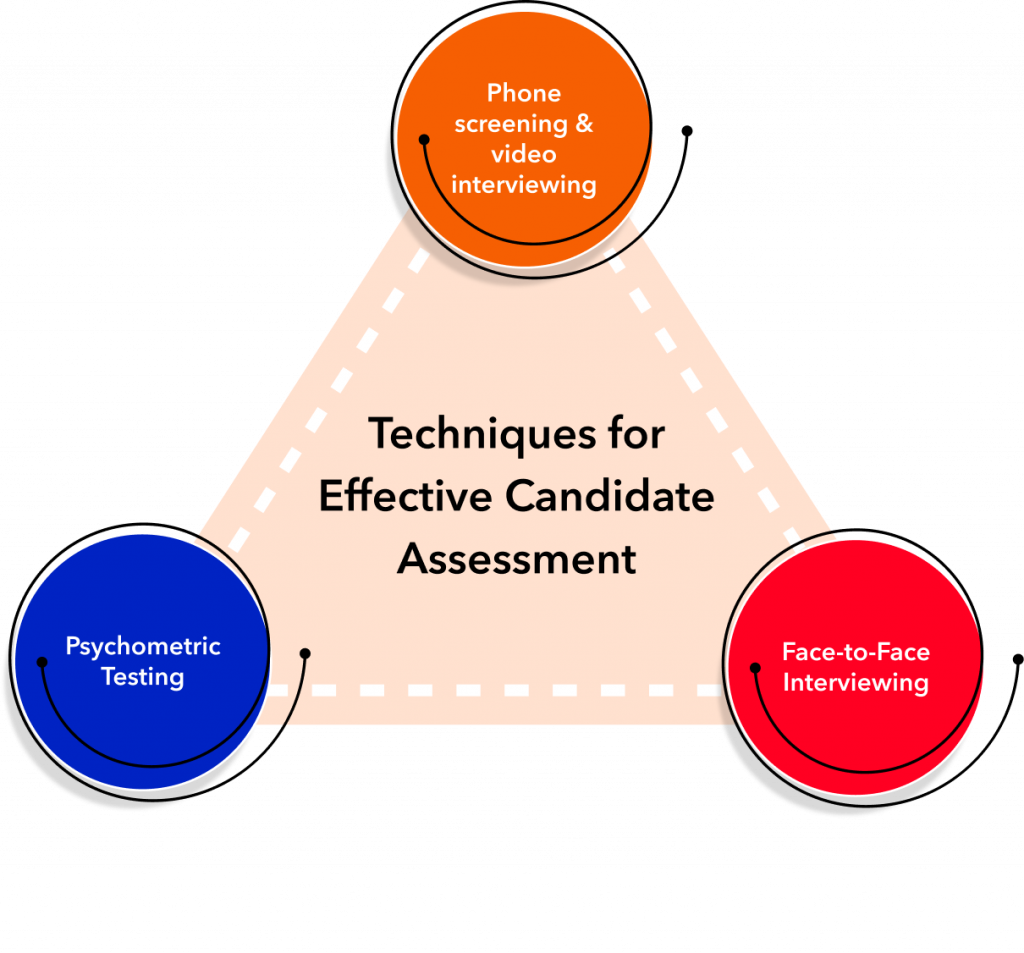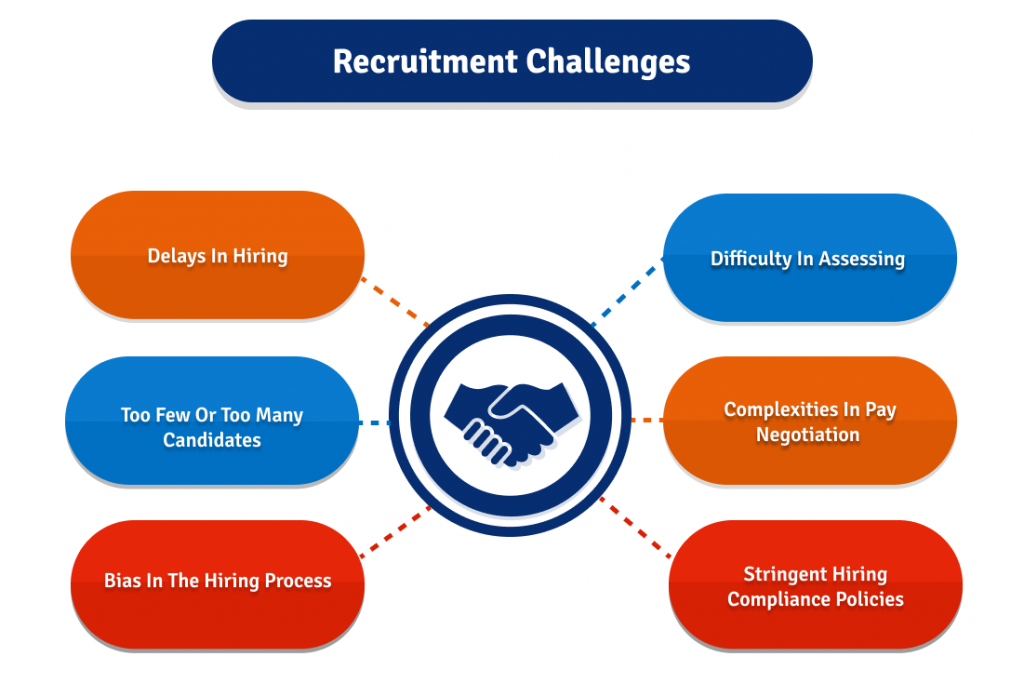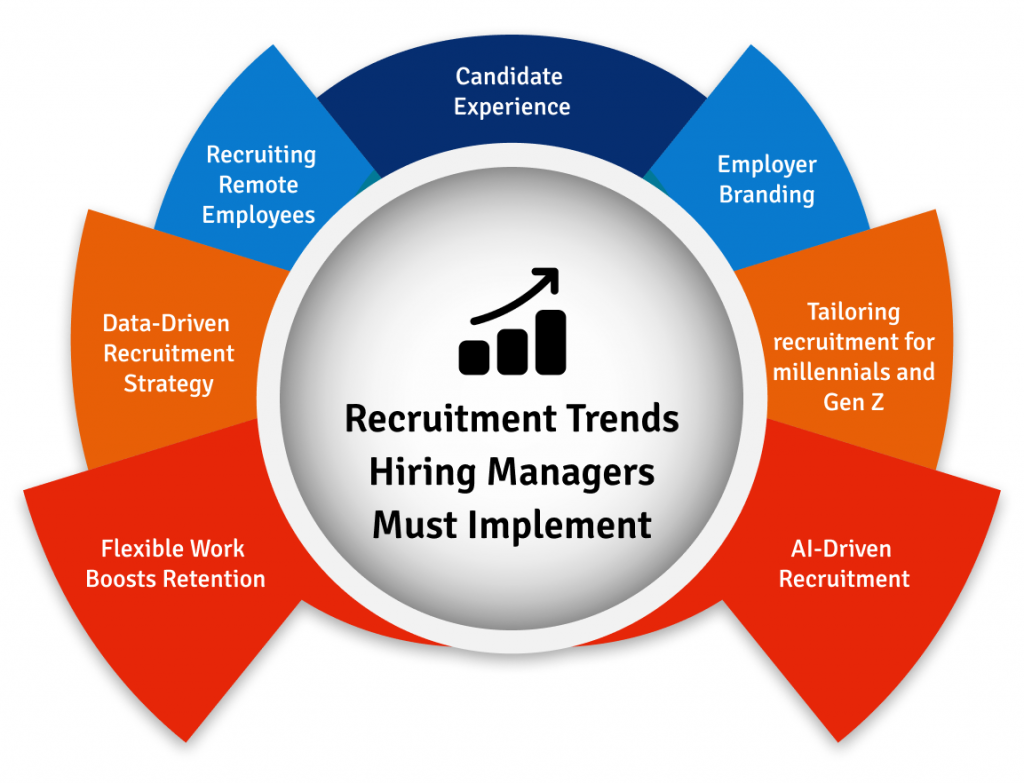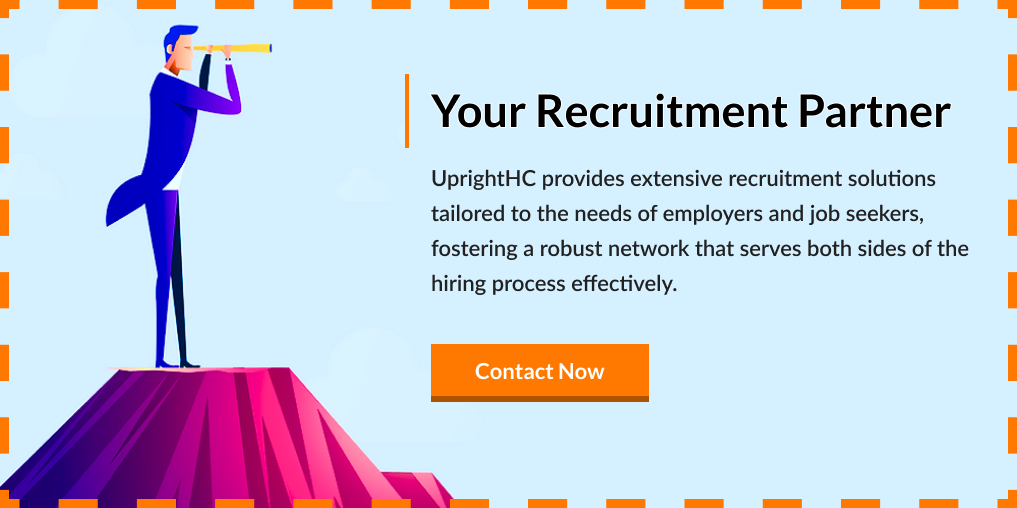AI/ML Recruitment,Recruitment Services,
 Back to blogs
Back to blogs
Recruitment Guide for Hiring Managers
The hiring guide is an extensive resource that outlines the processes, challenges, solutions and trends for recruiting and selecting candidates for a job. It provides employers with a systematic hiring framework, promoting uniformity, equity, and efficiency in acquiring talent.
Written by : Neha Nandal | On :23-02-2024
Recruitment Services
Welcome hiring managers! As pivotal drivers of organizational success, you understand effective recruitment’s critical role in building strong teams.
However, navigating the recruitment process can be complex and challenging. That’s where this guide comes in. Designed specifically for hiring managers/ startups/SMEs and enterprises. This hiring guide encompasses each stage of the recruitment process, from candidate sourcing and interviews to extending job offers. It also provides best practices to identify and select the most qualified applicants effectively.
Let’s begin.
Chapter 1
What are the Different Types of Recruitment?
Recruitment can take various forms, each tailored to meet specific organizational needs and objectives. Here are the different types of recruitment:
Internal Recruitment
Internal recruitment involves selecting current employees to fill open positions within an organization. This strategy allows businesses to hire individuals who are already acquainted with the organization’s culture, policies, and processes, as well as ascertain if the candidate has a proven track record of success within the company.
Internal recruitment methods include job postings, internal job fairs, and employee referral programs. Furthermore, internal recruitment may provide employees with opportunities for career advancement within the company. Some benefits of internal recruitment include higher employee retention rates, increased job satisfaction among current employees, and reduced recruitment costs for firms.
External Recruitment
External recruitment involves seeking assistance from external sources to fill job openings within an organization. This process encompasses utilizing job boards, hiring platforms, consulting companies, and social media to attract and hire candidates external to the organization.
Various methods of external recruitment include job fairs, university recruiting events, and online job advertisements. Additionally, organizations may engage in targeted outreach to specific candidate pools, such as business professionals or recent graduates.
External recruitment offers benefits such as access to a diverse talent pool with a range of skills and experiences, as well as the introduction of new ideas and perspectives that can foster innovation and growth. However, external hiring typically requires more time and financial investment compared to internal hiring processes.
Online Recruitment Type
Online recruiting involves the posting of job openings, candidate sourcing, and management of the hiring process through digital platforms. The widespread use of the internet has profoundly impacted online recruiting, leading to the emergence of virtual recruitment methods such as pre-recorded video interviews, which have become increasingly popular in recent years.
Some of the benefits of online recruitment include:
- Increased reach: In contrast to conventional recruitment approaches, online hiring allows businesses to reach a larger pool of potential applicants.
- Cost-effective: As online recruitment methods eliminate the need for printing and postage, they offer a more cost-effective alternative to traditional approaches.
- Time-saving: Because online applications can be received and reviewed quickly and effortlessly, online recruitment tends to be more effective than traditional recruitment methods.
- Improved candidate experience: Planned recruitment practices can offer candidates a more user-friendly and transparent application process, enhancing their overall experience.
Referral Recruitment Type
Referral recruitment serves as a significant employee engagement platform, encouraging staff involvement by offering credits and benefits for successful referrals. This approach not only facilitates rapid recruitment but also motivates employees in their roles.
Recruiters and companies can leverage referral programs periodically to acquire trustworthy employees through employee referrals. Promotion of the referral program within the organization can be done through various internal communication channels, offering monetary rewards for successful recommendations, providing user-friendly referral portals, and implementing other effective strategies.
Some of the benefits of referral recruitment include:
Access to high-quality candidates: Referral hiring offers businesses the opportunity to connect with top candidates who have been recommended by current employees, thereby increasing the likelihood of cultural alignment within the workplace.
Cost-effective: Referral recruiting is a cost-effective method of attracting and hiring talent, as it eliminates the need for expensive advertising and recruiting campaigns.
Faster hiring process: Candidates who come through referrals are often highly motivated to apply and may already have a connection with the company, expediting the process of filling job opportunities for organizations.
Improved employee retention: Referral hiring has the potential to enhance employee retention, as employees who refer qualified candidates may feel a stronger sense of commitment to the business.
Headhunting
Headhunting is a recruitment strategy that involves identifying and approaching individuals for jobs. For example, individuals who are employed in other companies and intend to recruit them for a job opening.
Interestingly, this approach is typically used to target highly skilled, experienced, or specialized candidates. Also, who may not be actively looking for a job. Headhunting can take many forms. Such as using professional networking sites or reaching out to candidates through personal contacts.
Also, engaging the services of a professional recruitment company. Headhunting firms, also known as executive search firms. So, these are typically engaged by companies to identify and approach candidates for senior-level or executive positions.
Walk-in Interviews
Walk-in interviews involve candidates attending interviews without prior appointments. This type of recruitment is common in industries such as retail, hospitality, and customer service. Walk-in interviews offer several advantages, including faster recruitment processes as well as low recruitment costs or screening.
Chapter 2
Recruitment Process
What are the Different Types of Recruitment?
#1. Identify your Hiring Needs
To effectively fill a job opening, whether it’s newly created or recently vacated, you must first understand your requirements. Therefore, your recruitment process should begin with identifying existing vacancies and analyzing the job specifications, including the necessary knowledge, skills, and experience for the role.
Here’s how you can determine your hiring needs:
- Identify any gaps within your current team and assess whether there are new requirements in terms of skills, performance, or personality. Consider if some tasks or responsibilities are currently unattended and determine if there’s a need to fill these gaps through hiring. This assessment will indicate if bringing in new talent is necessary.
- Monitor the balance between input and output within your team. Identify any upticks in workflow that may require addressing through hiring additional personnel.
- Periodically evaluate performance and compile a list of lacking qualities, qualifications, skills, and proficiencies that are necessary to enhance your team. This assessment can also indicate potential hiring requirements.
- Be attentive to the departure of current employees, as this signals a clear need for hiring replacements.
Whenever you identify a hiring necessity, take proactive steps before it becomes urgent.
Recruitment planning initiates the recruitment process, entailing the analysis and delineation of job specifications, qualifications, experiences, and skills necessary to fulfill available positions.
An inadequately structured recruitment plan may falter in capturing the interest of potential candidates from the applicant pool.
#2. Defining Job Roles and Responsibilities
Once you’ve identified the specific knowledge, skills, and experience required, it’s crucial to outline the duties and responsibilities of the job. Developing a thorough job description (JD) enables you to clearly define the qualifications necessary for potential employees to fulfil the role’s requirements.
Importantly, the JD serves as a checklist for candidates to evaluate their suitability before applying, ensuring that you receive applications from individuals who align with the job’s demands.
Checklist to Crafting the Perfect Job Description
- Company Name & Description
- Core Values
- Benefits Offered
- Location
- Job Title
- Department
- Industry Pay
- Description of Duties
- Demand (specific skill set, knowledge, experience or training required for the job)
- Qualities that are nice to have and would be an added advantage
- A conversational CTA
PS: This comprehensive checklist can be tailored to accommodate the distinctive recruitment requirements of your organization.
Dos and Don’ts for Crafting an Ideal Job Description
| Do’s |
 Personalize Personalize |
 Be specific Be specific |
 Use the right keywords Use the right keywords |
 Use bullets to break the monotony Use bullets to break the monotony |
 Keep the tone conversational Keep the tone conversational |
 Provide details when you can Provide details when you can |
| Don’ts |
| ✘ Don’t use big chunks of text |
| ✘ Don’t use jargon or metaphors |
| ✘ Don’t sugarcoat the challenging aspects – great candidates want to make things happen |
#3. Screening Resumes and Applications
Screening resumes and applications is a critical step in the recruitment process aimed at identifying potential candidates who possess the necessary skills and qualifications for a given job role.
Developing an effective resume screening process involves implementing strategies to streamline candidate selection. According to a survey by CareerBuilder, 75% of hiring managers say they use software to screen resumes. This highlights the importance of leveraging technology to manage the influx of applications efficiently.
Identifying key skills, qualifications, and experience is essential for assessing candidate suitability. Research from LinkedIn shows that recruiters spend an average of 6 seconds reviewing a single resume. This underscores the importance of clearly highlighting relevant skills and experiences to capture recruiters’ attention during the screening process.
Using applicant tracking systems (ATS) can significantly enhance screening efficiency. Companies are using ATS allowing them to make the screening seamless. ATS automates resume parsing, keyword matching, and application tracking, enabling recruiters to quickly identify top candidates and streamline the hiring process.
Here are key steps to effectively screen or shortlist candidates:
- First, review applications to ensure they meet the minimum qualifications for the role.
- Next, prioritize resumes that possess preferred credentials, including certifications, relevant experience, domain expertise, technical competencies, and other specific skills required for the position.
- Then, identify candidates who satisfy both the preferred credentials and minimum qualifications.
- Finally, highlight any questions or concerns in the resume to address during the interview process.
#4. The Art of Interviewing: Techniques for Effective Candidate Assessment
The shortlisted candidates will proceed through the interview process before receiving an offer letter or notification of rejection. Depending on the size of the hiring team and their specific recruitment requirements, multiple interviews may be arranged for each candidate.
Phone Screening/Video Interviewing
This method offers a quick and easy way to evaluate candidates and their skills. During the phone or video interview, you have the chance to make a memorable first impression on potential employees. While it’s important to keep the first interview short, don’t forget to assess candidates based on the qualifications and experience listed in the job description. This helps you weed out irrelevant profiles early on in the process.
Psychometric Testing
This step is incredibly important in the selection process because the insights gained from this assessment can determine if potential employees will be effective and productive in the long term. This screening process is unbiased yet crucial, efficiently identifying the right fit for any position. Psychometric tests serve as a valuable reference for any role, as they provide a comprehensive profile of personality, behaviour, flexibility, aptitude, creativity, communication, and problem-solving skills needed for success in the position.
Face-to-Face Interviewing
Personal interviews may extend in duration as they represent the last step before the recruiter conducts final evaluations and extends job offers. Typically, final interviews involve top management and are reserved for a select few standout candidates. At this stage, the final hiring decision should be reached, along with selecting a backup candidate if necessary.
Here are some interview tips to keep in mind:
- Interviews involve a mutual evaluation process. Candidates also assess whether your company is a suitable fit for them. Therefore, it’s important to be courteous, respectful, and highlight the benefits of the job role and the organization.
- Craft questions that provide comprehensive insights into each job applicant’s professional background, enabling you to evaluate their suitability for the open role.
- Avoid posing abstract questions to gauge your candidate’s response; instead, focus on asking questions directly related to the role.
#5. Assessing Skills and Competencies
Assessing skills and competencies in the selection process is a multifaceted approach aimed at identifying candidates who are the best fit for the organization and the role they’re applying for. It involves delving into both technical skills, which are job-specific and directly related to the tasks candidates will perform, and soft skills, which encompass interpersonal abilities, communication skills, adaptability, and emotional intelligence.
Technical skills ensure that candidates can effectively carry out the duties and responsibilities of the role, while soft skills are crucial for teamwork, collaboration, and overall workplace dynamics.
To assess these skills comprehensively, recruiters often use various methods, including assessments, tests, interviews, and practical exercises. These evaluations provide recruiters with valuable insights into candidates’ abilities, strengths, weaknesses, and potential areas for development.
Furthermore, making data-driven decisions in the selection process involves analyzing assessment results, interview feedback, and other relevant metrics to objectively evaluate candidates. This approach helps to minimize biases and subjectivity in the hiring process, ensuring that hiring decisions are based on concrete evidence and aligned with the organization’s goals and values.
By systematically assessing skills and competencies, recruiters can identify candidates who not only possess the necessary technical skills but also demonstrate the soft skills and cultural fit required to thrive within the organization. This rigorous evaluation process ultimately leads to better hiring decisions and helps build high-performing teams.
#6. Reference Checking and Background Screening
Reference checking and background screening play pivotal roles in the recruitment process, ensuring the verification of candidate credentials and maintaining the integrity of the hiring process.
Thorough reference checks are imperative for confirming the accuracy of a candidate’s qualifications and evaluating their past performance in previous roles. References offer valuable insights into a candidate’s work ethic, skills, strengths, weaknesses, and overall suitability for the position.
Moreover, legal considerations and best practices in background screening are crucial aspects to uphold. Compliance with laws such as the Fair Credit Reporting Act (FCRA) is essential to ensure fairness, accuracy, and confidentiality in background checks.
Best practices include obtaining candidate consent, maintaining confidentiality, and utilizing reputable screening agencies.
Beyond legal compliance, background screening helps ensure candidate integrity and reliability by verifying educational qualifications, employment history, criminal record, and other pertinent information.
By validating candidate credentials, organizations can mitigate the risk of hiring individuals who may misrepresent themselves or pose threats to the workplace.
Ultimately, reference checking and background screening are vital measures for building trust, maintaining workplace safety, and upholding the organization’s reputation.
These practices contribute significantly to informed hiring decisions, risk mitigation, and the establishment of a reliable and trustworthy workforce.
#7. Extending Job Offers: Negotiation and Closing the Deal
Extending job offers marks a critical stage in the recruitment process, where various elements come into play to secure the best candidates for the role and the organization. Crafting compelling job offers involves more than just outlining the terms and benefits; it’s about effectively communicating the unique value proposition of the position and the organization.
This includes highlighting growth opportunities, company culture, and any additional incentives that make the offer enticing.
Salary negotiations are a delicate yet necessary aspect of the job offer process. Effective negotiation requires a deep understanding of market rates, the candidate’s expectations, and the organization’s budget constraints. It’s about finding a middle ground that satisfies both parties and sets the stage for a positive working relationship moving forward.
Moreover, ensuring a positive candidate experience during the offer stage is crucial for several reasons. A seamless and transparent offer process reflects positively on the organization’s professionalism and values, which can significantly impact the candidate’s perception of the company.
Timely communication, clear expectations, and responsiveness to candidate inquiries all contribute to a positive experience, regardless of whether the candidate ultimately accepts the offer.
By prioritizing these aspects of the offer stage, organizations not only increase the likelihood of securing top talent but also enhance their employer brand and reputation in the marketplace.
A positive candidate experience sets the tone for a productive and mutually beneficial relationship between the candidate and the organization, ultimately driving long-term success and retention.
#8. Onboarding New Hires
Onboarding new hires is not just about paperwork and formalities; it’s a strategic process that sets the tone for an employee’s entire journey within the organization. A structured onboarding process helps new hires acclimate to their roles, understand their responsibilities, and integrate into the company culture seamlessly.
It gives them the tools, resources, and support networks to navigate their new environment effectively. Moreover, a welcoming and informative onboarding program goes beyond basic orientation sessions; it includes introductions to key team members, training on job-specific tasks and technologies, and clarification of company values and expectations. This early engagement is crucial for fostering a sense of belonging and instilling confidence in new hires.
Furthermore, monitoring and evaluating the onboarding experience allow organizations to continually refine and improve their processes.
By gathering feedback from new hires, HR teams can identify pain points, address any concerns, and make necessary adjustments to enhance the onboarding journey.
This ongoing evaluation ensures that the onboarding process remains relevant, engaging, and aligned with the organization’s goals and values. Ultimately, investing in a comprehensive onboarding experience not only accelerates new hire productivity but also contributes to higher levels of job satisfaction, employee retention, and overall organizational success.
#9. Building a Strong Employer Brand
Building a strong employer brand goes beyond mere recruitment; it’s about shaping how the organization is perceived by both current and potential employees, as well as the broader community.
Employer branding directly impacts recruitment efforts by influencing candidates’ decisions to apply for positions within the company. A positive employer brand can attract top talent, while a negative perception may deter potential candidates from considering job opportunities.
To cultivate a compelling employer brand, organizations need to adopt strategies that highlight their unique culture, values, and employee-centric initiatives.
This could involve showcasing employee testimonials, success stories, and testimonials to provide authentic insights into the company’s culture and work environment.
Moreover, organizations should focus on fostering employee engagement, offering professional development opportunities, and prioritizing employee well-being to reinforce a positive employer brand.
A strong employer brand not only helps attract top talent but also contributes to higher employee satisfaction, improved retention rates, and enhanced overall organizational performance. Therefore, investing in building and maintaining a strong employer brand is essential for long-term success in talent acquisition and retention.
#10. Diversity and Inclusion in Recruitment
Diversity and inclusion in recruitment are vital components of creating a workplace environment that fosters innovation, creativity, and employee engagement. Embracing diversity means valuing and celebrating differences in race, ethnicity, gender, age, sexual orientation, abilities, and backgrounds among employees.
Inclusion, on the other hand, entails creating a culture where all individuals feel respected, supported, and empowered to contribute their perspectives and talents fully.
Organizations that prioritize diversity and inclusion not only benefit from a broader talent pool but also experience higher levels of employee satisfaction, retention, and productivity.
Moreover, diverse teams are better equipped to solve complex problems, make more informed decisions, and adapt to changing market dynamics.
Strategies for attracting diverse talent involve proactive efforts to reach out to underrepresented groups, fostering an inclusive company culture, and providing equal opportunities for career advancement.
Mitigating bias in the recruitment process is essential to ensure fair treatment of all candidates. This includes implementing objective evaluation criteria, offering unconscious bias training to hiring managers, and leveraging technology to remove identifying information from resumes during the initial screening process.
By embracing diversity and inclusion in recruitment, organizations can build stronger, more resilient teams that are better equipped to thrive in today’s diverse and globalized business landscape. It’s not only a matter of compliance but also a strategic imperative for driving innovation, creativity, and sustainable growth in the long term.
Chapter 3
Recruitment Challenges and Their Solutions
- Delays in hiring
Each hiring process presents its own set of obstacles. Whether it’s delays in recruitment or challenges in evaluating cultural compatibility, these hurdles can complicate the hiring process. However, there are practical solutions available to surmount these challenges and discover the ideal candidate for your organization.
Recruiters and hiring managers often encounter delays in the hiring process, a common challenge in recruitment. Unclear job requirements or an ambiguous hiring process are frequently the primary causes of these delays. Such ambiguity can result in confusion among stakeholders, ultimately prolonging the decision-making timeline.
Organizational bureaucracy is another factor that can impede the hiring process. Lengthy approval procedures and complex decision-making structures can considerably slow down recruitment efforts. To mitigate these delays, companies should establish transparent communication channels and streamline decision-making processes.
- Too few or too many candidates
A common recruitment challenge involves encountering either an insufficient or excessive number of candidates for a job vacancy. Both situations present hurdles in identifying the ideal talent for your organization.
When faced with a shortage of candidates, identifying individuals who fulfill all the criteria and possess the requisite skills and experience becomes challenging. Conversely, an abundance of applicants poses an equally daunting task. Sorting through numerous resumes and conducting multiple interviews can exhaust valuable time and resources.
To address these challenges, contemplate adopting strategies such as refining job descriptions to allure better-suited candidates or broadening your sourcing channels beyond conventional methods. Additionally, leveraging applicant tracking systems (ATS) equipped with automated filtering based on predetermined criteria can aid in streamlining candidate selection processes.
- Bias in the hiring process
Bias may manifest across different stages, ranging from resume evaluations to interviews and final decisions. Unconscious biases, influenced by factors such as gender, race, age, or other characteristics, can impede diversity efforts and result in inequitable outcomes.
To tackle this issue, organizations should adopt diverse strategies to mitigate bias. This involves employing structured interview questions that prioritize job-related skills and competencies over personal attributes. Providing training to hiring managers on unconscious biases aids in their recognition and reduction of their influence.
Implementing diverse interview panels is another effective strategy for mitigating bias. By engaging individuals from varied backgrounds and perspectives in the decision-making process, organizations guarantee an impartial assessment of candidates’ qualifications, minimizing reliance on individual opinions alone.
- Difficulty in assessing
Recruiters frequently encounter challenges when assessing cultural fit in the hiring process. It can be complex to gauge whether a candidate will harmonize effectively with the company’s values, work ethic, and overall environment. This is because evaluating organizational culture fit extends beyond mere skills and qualifications; it requires assessing a candidate’s personality, attitudes, and beliefs.
To address this challenge, companies can integrate behavioural interview questions that delve into candidates’ experiences in previous roles. Such questions aid in evaluating their problem-solving skills and approaches to teamwork and conflict resolution.
- Complexities in pay negotiation
Finding the appropriate compensation package necessitates delicately balancing meeting the candidate’s expectations with aligning with the company’s budget constraints.
Considering aspects like industry standards, market rates, and internal equity is crucial when establishing an appropriate salary range. This necessitates conducting comprehensive research and comparing against analogous positions in your field to guarantee competitive compensation. Early, transparent discussions about candidates’ salary expectations aid in managing anticipations and averting time wastage on applicants seeking significantly higher salaries than your offering.
In negotiating pay, it’s important to contemplate additional benefits or perks that can be integrated into the comprehensive package. These may encompass bonuses, stock options, flexible work schedules, or avenues for professional growth, all of which might impact a candidate’s decision-making process.
- Stringent hiring compliance policies
Rigorous hiring compliance policies constitute a crucial element of the recruitment process, ensuring organizations abide by legal and ethical standards when bringing in new employees. Compliance regulations differ based on factors such as industry, country, and specific job prerequisites.
To adhere to these compliance standards, recruiters need a comprehensive understanding and adherence to all relevant laws, including equal opportunity regulations and background check policies. Non-compliance with these regulations can lead to significant repercussions for both the organization and the individuals implicated.
Chapter 4
Recruitment Trends Hiring Managers Must Implement
As a hiring manager, now you know the recruitment process and the challenges it poses. To stay ahead of the competition, you need to know the latest recruitment trends and implement them.
Candidate Experience
As the demand for skilled candidates often surpasses the available supply, job seekers are becoming increasingly discerning when selecting companies to apply to, placing significant emphasis on employer brands. Candidate experience is emerging as a crucial factor in this regard.
Employer Branding
Before submitting applications, job seekers conduct thorough research on a company’s reputation and brand. Consequently, employers are recognizing the significance of upholding or enhancing their brand image. Similar to customers, prospective applicants seek associations with businesses esteemed within their industry.
Tailoring Recruitment for Millennials and Gen Z
As millennials already comprise the largest segment of the global workforce, 2024 will witness a surge in Gen Z candidates entering the job market. Customizing recruitment strategies for these two generations is imperative for businesses aiming to attract and retain the upcoming workforce.
AI-Driven Recruitment
AI technology is employed for sourcing candidates, reviewing resumes, and coordinating interviews. Certain platforms utilize AI to analyze responses to written interview questions, learning from the data and employing algorithms to advance the best-fit candidates.
An area where AI shows significant potential is in eliminating bias from job descriptions. AI-powered writing tools can substitute language in job descriptions that may be biased or gendered, promising more inclusive and equitable recruitment processes.
Recruiting Remote Employees
Since 2020, numerous businesses have shifted from in-person to a hybrid remote workforce. This transition offers advantages beyond the company, with cost savings, enhanced morale, and the diversification of talent being pivotal factors propelling this shift.
Recruitment agencies have observed a notable rise in the number of candidates actively seeking remote work opportunities, or at least a hybrid model that minimizes their daily commute, allows for more family time and alleviates the strain of continuous social interaction.
Data-driven Recruitment Strategy
A data-driven strategy is among the most recent trends in recruitment. As remote work and ongoing changes induced by the coronavirus shape the landscape of work, the accumulation of information and data persists. Therefore, managers must possess a deep understanding of data, budgets, and other critical information to maintain a robust bottom line. Consequently, they will guarantee that each strategy is in alignment with crucial data and reports.
Chapter 5
How to Choose a Recruitment Agency
Recruitment agencies excel in sourcing, evaluating, and securing qualified candidates across diverse roles and industries. They offer a time-saving, cost-effective solution, sparing you the hassle of managing the hiring process yourself.
However, not all recruitment agencies are created equal. Choosing the wrong one can lead to wasted resources, poor-quality hires, and a damaged reputation. So, how do you choose the right recruitment agency for your company? Here are some tips to consider:
- Assess your Company’s Requirements
Evaluate your business requirements to ascertain the number of job applicants needed and their specifications, including job positions, essential skills, and knowledge. These insights aid in determining the type of recruitment agency required and their area of expertise. Consider factors such as their social network, size, and hiring approach. It is imperative to communicate your business needs clearly to the recruitment agency during discussions.
- Treat Recruitment Agencies Like Job Applicants
Ensure that the chosen recruitment agency can identify and connect with candidates suitable for the job position. To assess their capabilities, treat and interview them as you would job applicants.
Pose questions that enable you to gauge their capacity to fulfil your requirements and deliver on their promises. For example, inquire about their access to potential candidates, their candidate selection process, and the timeframe required to locate ideal talent.
- Check your Budget
Finding the right recruitment agency is paramount, but it’s equally important to ensure that their services align with your budget. Selecting an employment firm that fits within your financial constraints entails taking specific measures, and it’s a crucial one.
While numerous recruitment companies provide exceptional candidates, their fees may surpass those of other agencies offering similar calibre employees at a lower cost. Pursuing agencies with fees beyond your budget could result in wasted time and an outcome exceeding your spending limit.
- Identify the Type of a Recruiting Agency
Ensure you select the appropriate type of recruitment agency to avoid squandering resources. For instance, opt for a staffing hiring agency if you require short-term staff.
Alternatively, if you aim to recruit an executive, consider engaging an executive recruitment agency. Conversely, for employees at various levels or specialized in specific fields, general recruitment agencies are suitable options.
- Run Background Checks
When selecting the appropriate recruitment agency, it’s vital to seek testimonials and reach out to their past clients who have similar-sized and typed companies as yours. Verify if their outcomes align with their promises and opt for the most trustworthy agency.
Your business merits excellence. Therefore, understand your requirements when selecting the ideal recruitment agency, pose inquiries to ascertain their suitability, and ensure their capability to deliver exceptional results.
Chapter 6
UprightHC: Your Recruitment Partner
Choosing UprightHC as your recruitment partner means leveraging a wealth of expertise and resources dedicated to finding the ideal talent for your organization. Here’s why partnering with UprightHC stands out:
- Get a Professional Recruitment Process for Any Business
Our consultants are adept at guiding you through the recruitment process, aligning with your business needs and executing each step with unwavering dedication. Leveraging the insights provided by your organization, we diligently search for highly qualified candidates to assist in constructing a robust workforce.
- In-Depth Search To Find Star Candidate
Discovering a cost-effective solution has never been simpler, thanks to our meticulous and efficient approach. Our experts leverage their established connections to identify and connect your organization with the ideal candidates, streamlining the hiring process for your organization.
Here’s How We Help Our Clients
- Hire Candidates on Demand
Recruitment will be conducted on demand, with our seasoned recruiters tasked to source, screen, and interview top-tier candidates for your organization’s needs.
- Building A Strategy Around Your Organisation
Our team of experts is capable of designing a recruitment framework from scratch or refining an existing ineffective process.
- Create A Recruitment Plan
A fresh recruitment strategy will be developed by assessing our clients’ requirements for hiring employees possessing the necessary skill sets.
- Screening Of Candidates
Screening holds significant importance in the recruitment process, and we employ a three-step procedure to assess candidates effectively.
- Retention Of Employees By Deploying Strategies
Employee retention stands as a pivotal factor in recruitment services; our team’s efforts extend beyond mere hiring.
- Know Our Clients Inside Out
Understanding our clients simplifies the entire recruitment process for us. By gaining insights into our clients, we streamline the hiring of suitable candidates.




